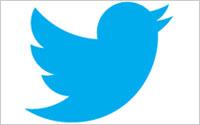 "Real-time" is cited 47 times in
Twitter's S-1 filing. You can bump it up to 69 times when the dash is removed between real and time. On top of that, "Live events" is cited 10 times and "auction" 12 times, all in reference to
advertising.
"Real-time" is cited 47 times in
Twitter's S-1 filing. You can bump it up to 69 times when the dash is removed between real and time. On top of that, "Live events" is cited 10 times and "auction" 12 times, all in reference to
advertising.
Essentially, Twitter knows it's the ultimate real-time platform.
When Twitter acquired MoPub, we knew some sort of real-time bidding (RTB) tie-in to Twitter's mobile
platform was on the horizon, and their S-1 filing confirms it. "Once we complete the acquisition of MoPub, we plan to invest to grow MoPub’s current business, including by extending advertising
across the mobile ecosystem through the MoPub exchange," the filing reads. "We also plan to use MoPub’s technology to build real-time bidding into the Twitter ads platform so that our
advertisers can more easily automate and scale their advertising purchases."
advertisement
advertisement
What those ads will look like remains to be seen, but up until now Twitter has utilized native formats. It would
surprise me to see a drastic change on mobile given its extremely simple user interface, but Twitter notes in the filing that they "intend to develop new and unique ad formats for" advertisers. Either
way, as long as the new formats don't drive all of their users away (they won't), Twitter is the perfect place for a mobile RTB exchange.
While not explicit, one of their six value
propositions to advertisers underscores the value an RTB exchange will bring to Twitter. The filing reads: "Twitter’s real-time nature allows our advertisers to capitalize on live events,
existing conversations and trending topics. By using our Promoted Products, advertisers can create a relevant ad in real time that is shaped by these events, conversations and topics."
The
filing also talks about utilizing auction-based ad pricing. "We use an auction for our pay-for-performance Promoted Products. The algorithms underlying the auction take into account the predicted ad
engagement rate of an advertiser’s campaign. As such, advertisers with higher quality and more relevant ads generally have a higher probability of being successful in the auction and can win the
auction with lower bids," it says.
And since we're talking mobile -- because Twitter certainly is, noting that "mobile has become the primary driver" of their business -- let's explore how
that works for Twitter and real-time. At its core, Twitter is a mobile service; its 140 character limit is in direct relation to SMS messages.
Twitter writes, "We aim to become an
indispensable daily companion to live human experiences."
Doesn't that sound an awful lot like the thing that's within five feet of you…right now? Your phone?
That line from
Twitter reminded me of a study conducted by Harris Interactive for Jumio this summer. The report said that 72% of adults keep
their smartphone within five feet of them most of the time. Truly speaking to a phone's indispensability was the study's finding that 9% of all adults and 20% of all 18- to 34-year-olds have sex and
use their smartphones at the same time. Talk about a companion to live human experiences.
Facebook has their Facebook Exchange, but it's not available on mobile. So Twitter will be charting
new territory here, and on the surface it seems to be betting on a lot of trends: mobile, RTB, and IPOs. Let's briefly look at those trends.
Mobile: The Harris Interactive/Jumio study covers the most important part: People use their phones, and that's not going to stop. It's also reasonable to assume that people
will not stop using Twitter on their phones.
RTB: For online display RTB accounts for about 20% of ad spend, with projections hitting 30%+
in a few years. While that's for online display, it shows that advertisers in general are comfortable with RTB.
Mobile RTB: Nobody has
ever given me a definite answer as to how much ad spend advertisers typically put toward mobile RTB, but I'm almost always given the same response: "Single digits, but that will rise."
IPOs: Going public is a recent trend for ad tech companies. While Twitter is not an ad tech company, their money will come from ad tech, so I think it
counts. The public companies haven't been public for long enough to see major trends, but the company Twitter is most often compared to -- Facebook -- has rebounded nicely after figuring out its ad
plan.